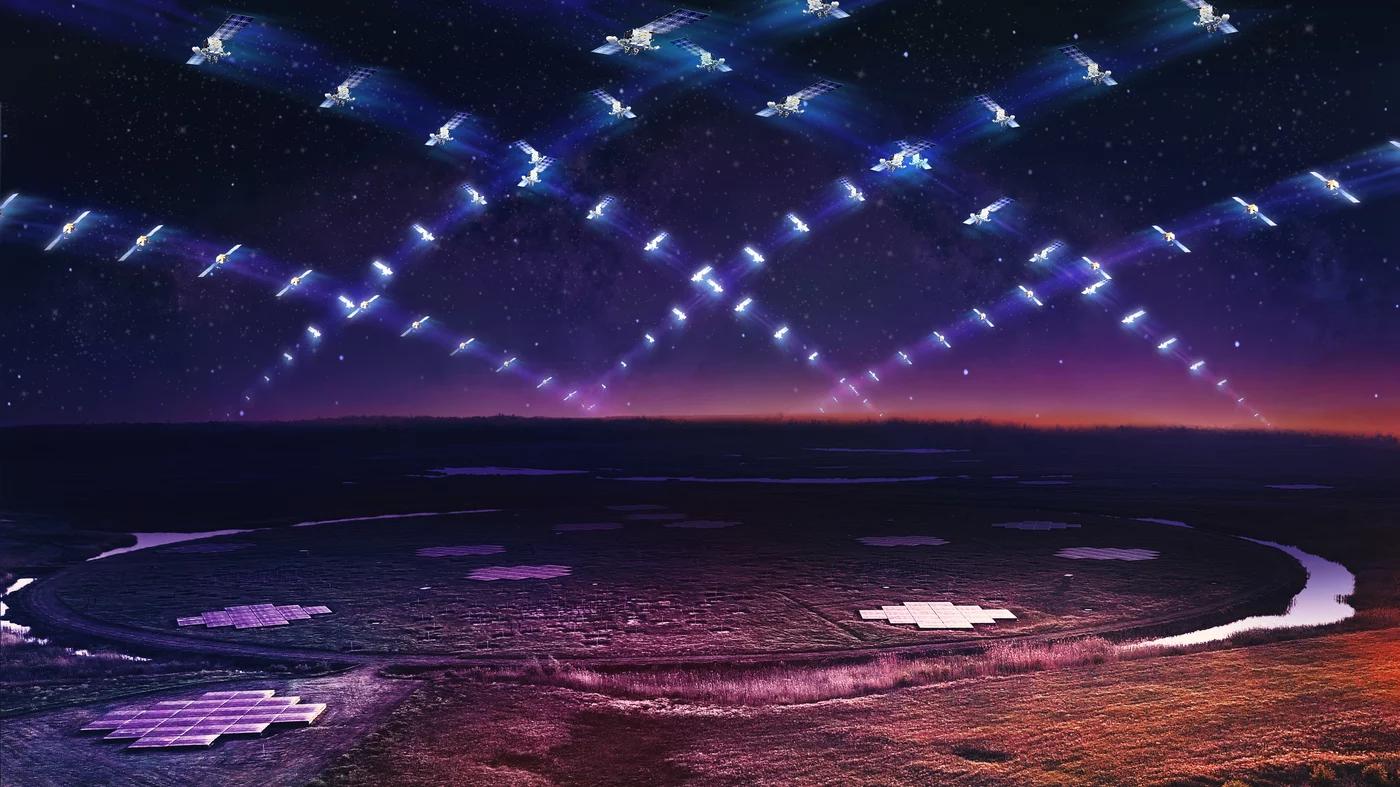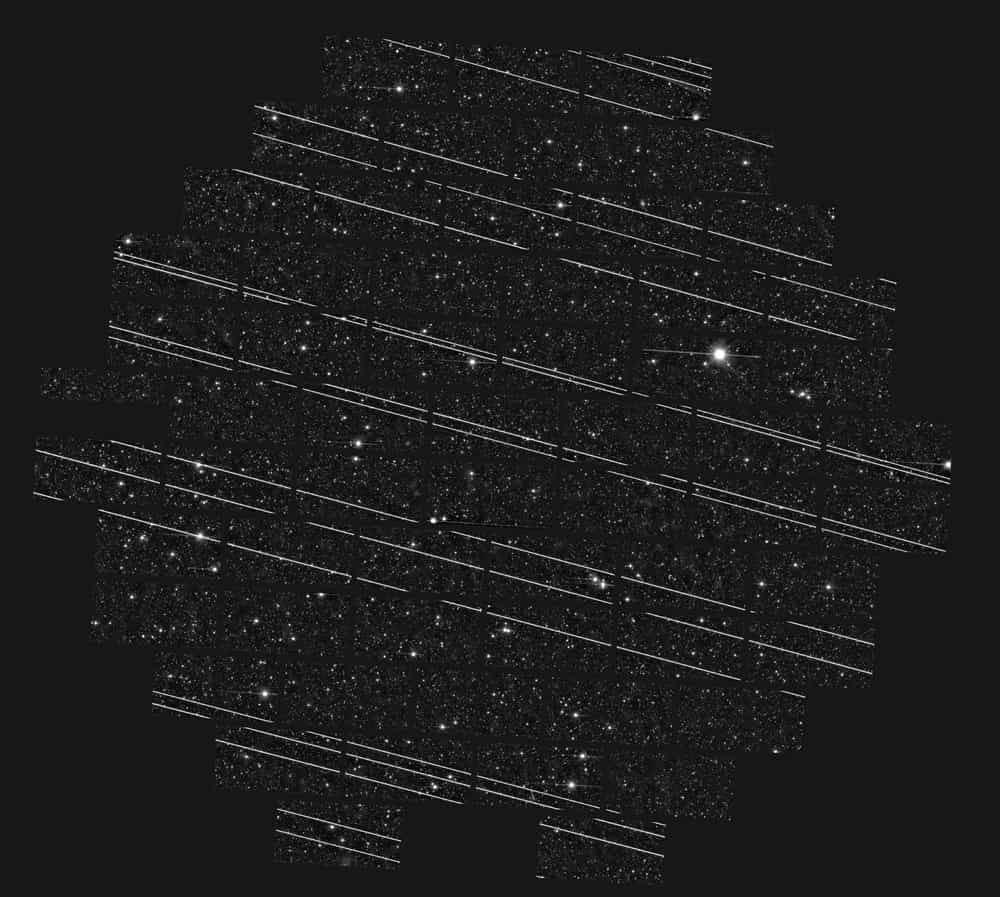
More than a third of the world’s population has never used the internet. For those who’ve grown up online surrounded by digital devices, this statistic may sound almost unreal. In the developed world, internet access is deemed a right almost as important as electricity or drinking water.
This is why when Elon Musk first unveiled his Starlink project, many saw it as a beacon of hope. Starlink promised to deliver global internet coverage through a constellation of thousands of satellites orbiting the Earth. Even the world’s most remote places could be serviced. Musk indeed followed through and launched over 4,000 Starlink satellites in low orbit since 2019. Nearly 12,000 such small satellites are planned to be deployed, which could be extended to over 40,000.
However, as these man-made objects multiply, concerns are mounting among scientists who explore the depths of space. They worry that these satellites are encroaching upon their ability to study the cosmos and that regulations are struggling to keep pace with the surge of activity in space. In turn, Starlink has downplayed these concerns.
In a newly published study, researchers have presented the most comprehensive evidence that Elon Musk’s Starlink constellation, a project under SpaceX, is indeed causing disruptions in scientific work. These scientists employed a powerful radio telescope array located in the Netherlands called Low-Frequency Array (LOFAR) to observe 68 of SpaceX’s satellites. Astonishingly, they detected radiation emissions from the satellites drifting beyond their designated frequency bands in space.
The Wild West in Earth’s low orbit
Federico Di Vruno, co-director of the International Astronomical Union Centre for the Protection of the Dark and Quiet Sky and one of the study’s authors, emphasizes the significance of this finding in light of the growing number of satellites orbiting above us.
“Why this matters is because of the number,” Dr. Di Vruno told ABC News. He adds, “Suppose that there is a satellite in space that radiates this kind of signal, there is a very, very small chance that this satellite will be in the beam, in the main site, of your telescope. But if the numbers start to increase, the likelihood of that happening if all the satellites are similar starts to increase.”
Space is ironically becoming increasingly crowded, particularly in low-Earth orbit, where most of these satellites reside. Experts estimate that the next decade will witness the launch of somewhere between 100,000 and 500,000 additional objects into space. The surge in satellite activity has prompted concerns among scientists, who describe the current state of affairs as akin to the Wild West.

Satellites like Starlink hinder telescopes from capturing clear photos of deep space. The massive cluster of satellites, intended to ensure seamless internet connectivity, has transformed the once pristine and clear night sky into a crowded battlefield of light pollution.
These satellites produce trails of sunlight reflected off their surface. Scientists depend on undistorted images and accurate measurements to advance our knowledge of the cosmos, but the presence of Starlink satellites disrupts this delicate equilibrium.
The impact of Starlink on radio astronomy is equally concerning. Radio telescopes are vital tools for studying various cosmic phenomena, including distant galaxies, pulsars, and even cosmic microwave background radiation. However, the satellites’ radio transmissions can drown out these faint cosmic signals, rendering data analysis difficult and compromising the scientific integrity of these observations.
Now, scientists have finally proven that Starlink emits low-frequency radio waves that hinder astronomy.
“With LOFAR, we detected radiation between 110 and 188 MHz from 47 out of the 68 satellites that were observed. This frequency range includes a protected band between 150.05 and 153 MHz specifically allocated to radio astronomy by the International Telecommunications Union (ITU),” says co-author Cees Bassa from ASTRON, the Netherlands Institute for Radio Astronomy.
The space industry is moving faster than we can regulate it
The authors of the new study emphasize that while the emissions from Starlink satellites were unintended, current space regulations do not address this problem. This is worrisome because there’s no reason why these communication satellites can’t be regulated like the rest of the industry. For instance, the electrical devices inside our homes have to undergo a battery of tests to ensure they do not interfere with one another and have to comply with very rigorous standards.
Moreover, Starlink’s adverse effects on scientific research extend beyond observations and data acquisition. The sheer number of satellites in low Earth orbit creates an unprecedented risk of collisions, threatening not only the Starlink constellation but also other scientific satellites and crucial space-based observatories.
These collisions could lead to the release of debris, exacerbating the growing space junk problem and endangering future scientific endeavors. By neglecting to address this pressing concern, the Starlink project puts both its own success and the future of space-based scientific exploration at risk.
SpaceX, the company behind Starlink, has taken limited steps to address these concerns. While the company has begun to test various strategies to reduce satellite reflectivity, such as sun visors and darkening coatings, these measures have yet to prove effective on a large scale. But light pollution measures do nothing to address the impact of radiation emissions that impact radio astronomy.
Additionally, their promises to listen to the scientific community and collaborate on solutions have thus far fallen short of expectations. Ask any astronomer what they think of Starlink and notice how they react. One thing’s for sure: they’re not happy at all!
But Starlink is far from being the sole culprit. London-based company OneWeb has over 600 communication satellites in low orbit, and Jeff Bezos’s Amazon plans to launch its own constellation of thousands of satellites in 2024.
As the scientific community endeavors to unravel the mysteries of the universe, it is imperative that regulations adapt to the evolving landscape of space. The exploration of deep space relies on undisturbed observations and the free flow of data. Only through international cooperation and thoughtful regulation can we ensure that humanity’s quest for knowledge can continue unhindered, even in the face of an increasingly crowded cosmic neighborhood.
The findings appeared in the journal Astronomy & Astrophysics.









